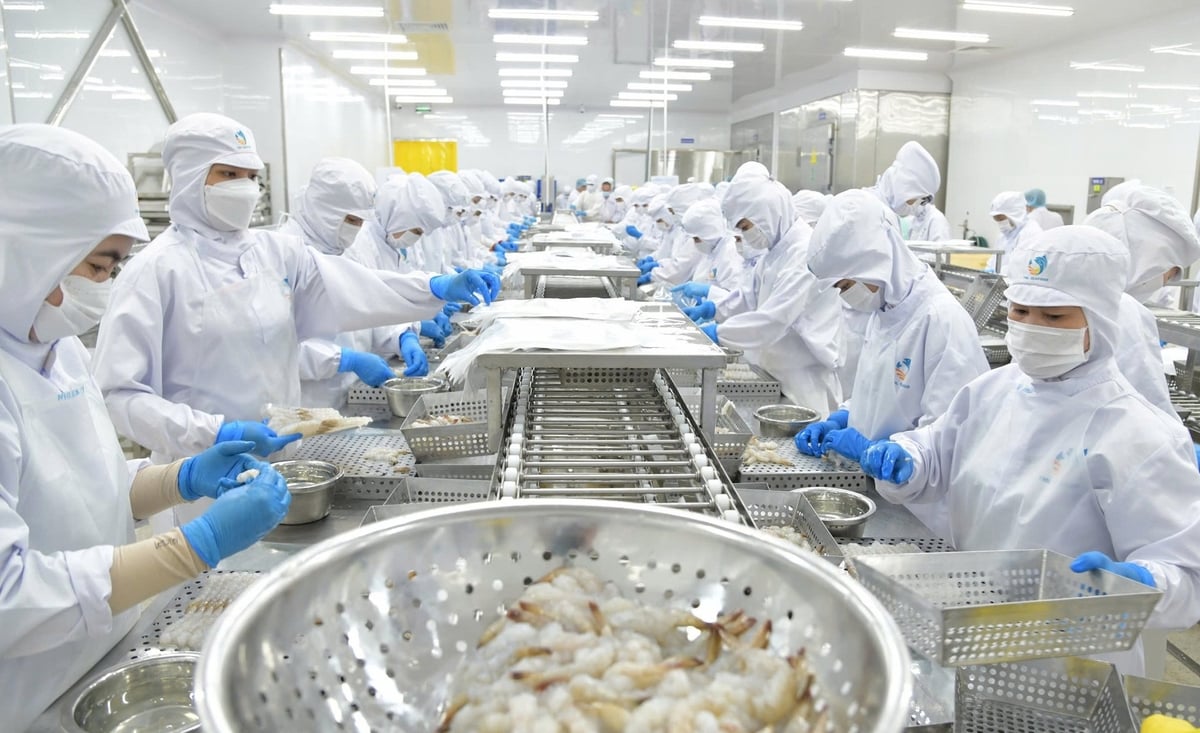November 12, 2025 | 00:18 GMT +7
November 12, 2025 | 00:18 GMT +7
Hotline: 0913.378.918
November 12, 2025 | 00:18 GMT +7
Hotline: 0913.378.918
The European Union (EU), with a population of over 450 million, is one of the largest seafood markets in the world. Its annual import demand is high and diverse, ranging from shrimp, pangasius, and tuna to mollusks. Thanks to its vast scale and stable consumption, the EU has consistently remained among Vietnam’s top three seafood export markets.
According to data from the Vietnam Association of Seafood Exporters and Producers (VASEP), in 2024, Vietnam’s seafood exports to the EU reached approximately USD 1.52 billion, accounting for 15% of the industry’s total export value. Several Vietnamese products have established a strong foothold in Europe, including pangasius, tuna, black tiger shrimp, whiteleg shrimp, and more recently, bivalve mollusks. Notably, in 2022, the EU became the largest consumer market for Vietnam’s mollusks, making up as much as 66% of the total export value of this product category.

The EU has been one of the major markets consuming seafood products from Vietnam for many years. Photo: Le Binh.
In addition, the entry into force of the EU-Vietnam Free Trade Agreement (EVFTA) in August 2020 has created a major advantage by eliminating many tariff lines, thereby expanding market access opportunities. European consumers’ demand is also shifting toward products that are nutritious, healthy, and sustainably sourced, which factors Vietnamese seafood can fully meet if production is well organized.
With strong aquaculture capacity, Vietnam’s output has grown significantly: pangasius production rose from 1.11 million tons in 2015 to nearly 1.8 million tons in 2024, while shrimp output increased by 55% in the same period. This provides a solid foundation for Vietnam to expand seafood exports to the EU in the long run.
Despite its clear potential, the reality is that Vietnamese seafood in the EU is still at a participation level, without securing a firm foothold.
According to Associate Professor Dr. Nguyen Van Lich, former Minister Counselor at the Embassy of Vietnam in Italy, the figure of USD 1.52 billion in 2024 is encouraging but only accounts for around 3% of the EU’s total seafood imports. “Vietnam ranks seventh among exporters to this market, far behind Norway or Ecuador,” he candidly noted.
The primary reason lies in technical and legal barriers from the EU side. Since 2017, the European Commission has imposed an IUU “yellow card” on Vietnamese seafood for violations of regulations against illegal, unreported, and unregulated fishing. This “yellow card” not only prolongs customs clearance and raises costs but also undermines the reputation of Vietnamese seafood in the market.

The IUU “yellow card” is one of the toughest bottlenecks preventing Vietnamese seafood from accessing the EU market. Photo: Le Binh.
Secondly, Vietnam’s seafood industry still faces limitations in terms of production scale and value chain integration. Most farming households remain small and fragmented, making it difficult to control quality and ensure traceability, both of which are crucial EU requirements. Domestic logistics systems are not yet fully synchronized, transportation costs remain high, and distribution channels in Europe are largely handled through intermediaries, which reduces the added value captured by Vietnamese enterprises.
Another critical factor is branding. "On European shelves, Vietnamese products mostly appear as processed goods without strong national identity. Meanwhile, competitors have succeeded in building internationally recognized brands, such as Norwegian salmon or Ecuadorian shrimp," noted Dr. Nguyen Thị Minh Phuong from the Diplomatic Academy of Vietnam.
In addition, increasingly stringent requirements on sustainability, environmental protection, and social responsibility also pose challenges. EU consumers prioritize products with certifications such as ASC, MSC, or GlobalGAP. While Vietnam already has many factories meeting EU standards, the number of farming households holding international certifications remains limited.
Translated by Kieu Chi

(VAN) From humble local delicacies, many businesses in the Mekong Delta have successfully conquered domestic and international markets with their distinctive One Commune One Product (OCOP) goods, contributing to sustainable rural economic development.

(VAN) The Vietnamese tilapia industry is only in the initial stages of export, yet its growth potential remains vast. To reach further, it needs to focus on breed stock, technology, and deep processing.
/2025/11/08/3402-1-212706_176.jpg)
(VAN) Viet Nam's fruit and vegetable exports continued to reach an extremely high turnover in October. With this growth momentum, the sector is expected to set a new milestone of USD 8.5 billion in 2025.
/2025/11/08/4950-1-163820_289.jpg)
(VAN) During the 2021–2025 period, Viet Nam's agro-forestry-fishery processing industry has made remarkable progress, achieving an average growth rate of 8%/year.

(VAN) Over 80 years, Vietnamese rice has journeyed through half a century to become a symbol of knowledge, resilience, and the new nation’s agriculture stature.

(VAN) The traders estimated that the lowest price in the tender, closed on Thursday by Bangladesh's state grain buyer, to buy 50,000 metric tonnes of rice was $355.59 per metric ton CIF, liner out.

(VAN) The information shared by Dr. Ngo Xuan Nam, Deputy Director of Viet Nam Sanitary and Phytosanitary Notification Authority and Enquiry Point (SPS Viet Nam), on October 30 during a conference on food safety regulations.